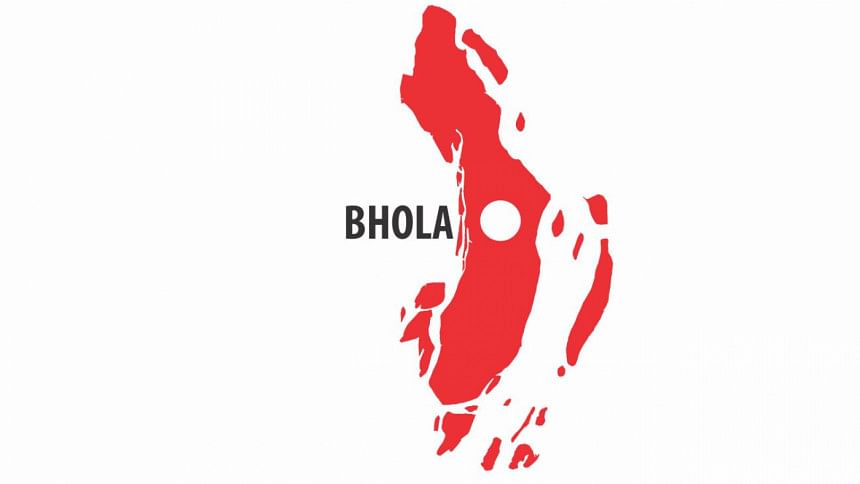No new gas field, yet it's big news

The gas field in Bhola has the potential to become the largest reserve of natural gas in the country, surpassing Titas in Brahmanbaria, geologists told The Daily Star yesterday.
But they were all found to be on the same page on two things: No new gas field has been discovered in Bhola, and the disclosure about the reserve (700 billion cubic feet) was premature.
The government announcement on Monday that a new gas field has been found about 3km from the existing gas field in Shahbazpur of Bhola triggered surprise and raised eyebrows among geologists and explorers.
“It's not a new gas field at all. The so-called new discovery is actually part of the structure of the Shabazpur gas field,” insists Prof Syed Humayun Akhter of Dhaka University's geology department.
Also, the “new gas field” is in fact only one and a half kilometers away, and not 3km as claimed by the government, from the Shahbazpur well, sources at the Bapex confided.
Gazprom, the Russian contractor of Bapex, began the exploratory drilling in August and confirmed, through preliminary tests days back, the existence of gas at almost the same depth and with nearly similar gas pressure like Shahbazpur's.
These are the crucial geological indications that the “new gas field” actually belongs to the old gas field, Prof Humayun argued.
Another senior geologist, Maksud Kamal, also failed to understand why the discovery was disclosed in such a hurried manner.
“Needless to say, it is a very important discovery. But certain geological tests must be done first to be able to say for sure if it is a new gas field or to ascertain the reserve volume,” said Maksud, who is chairman of the Department of Disaster Science and Management at DU.
“The Bapex [the explorer] has not done those tests yet. And it is highly unlikely that it is a new gas field,” he added.
However, the discovery can be an indication that a small Shahbazpur gas field (only 10km long, 7km wide) is in fact much larger than it was thought when discovered back in 1993.
The Bapex is also preparing to conduct drilling 35km north of Bhola. And if the results turn out to be good, it would mean that almost entire Bhola is lying on a massive sub-surface structure of natural gas.
But however huge the reserve is, the rest of the country would not be able to use the new found gas because of Bhola's geographical isolation from the country's mainland. Like now, the gas would be used in power generation and in industries in the region. Pipelines through long rivers to the national gas grid are way too costly.
As the discovery was announced by the cabinet secretary following a cabinet meeting with Prime Minister Sheikh Hasina in the chair, the Bapex is not saying anything contrary to the announcement on record for obvious reasons.
Off the record, sources at the Bapex admitted that, almost certainly, it is the same structure of Shahbazpur. And at least a couple of wells must be drilled to determine if it is an extension of the Shahbazpur well.
They also feel the disclosure should have been made after doing the DST (drilling steam test, a method to determine extractable reserve) and perforation test (a method to determine the flow pressure of the gas field).
“But if it is the same structure, the potential of the reserve will go up by many folds. As per our findings so far, the Bhola gas field has every potential to become the country's largest gas field,” a competent Bapex source asserted.
Md Nowshad Islam, managing director of Bapex, meanwhile claimed they had carried out five logs and semi DST, meaning engineers have seen the structure in five different ways over an area of 3,500 square metres and all of the logs have shown the same result.
“We have lifted up the physical sample of the layers where the gas has been found. We have found the gas. It is proven. The pressures in the three layers at 5,000-plus PSI [pound-force per square inch] are the highest in Bangladesh.”
But the Bapex went silent when asked about the reasons behind the hurried disclosure about the reserve.
But reliable sources said a certain secretary is to retire this month, and an early disclosure would ensure a job extension for him.
And that is probably why someone else, not Bapex, was in a hurry to make the announcement. Too bad, as they misled the prime minister in the process. There is another iron in the fire. There is a hefty bonus on offer for finding out new gas fields.
However, the secretary has not done anything new. Some years ago, a now former Petrobangla chairman had manufactured a discovery by declaring an old gas field as a new one for job extension.
Asked why the latest discovery was described as a new gas field, sources pointed fingers at the Gazprom. A “new gas field” tag would justify its mysterious involvement in a proven gas field zone.
“It's a success story for Bapex. Gazprom was thrust upon us early last year, for reasons best known to certain policymakers,” quipped an insider.

 For all latest news, follow The Daily Star's Google News channel.
For all latest news, follow The Daily Star's Google News channel. 








Comments